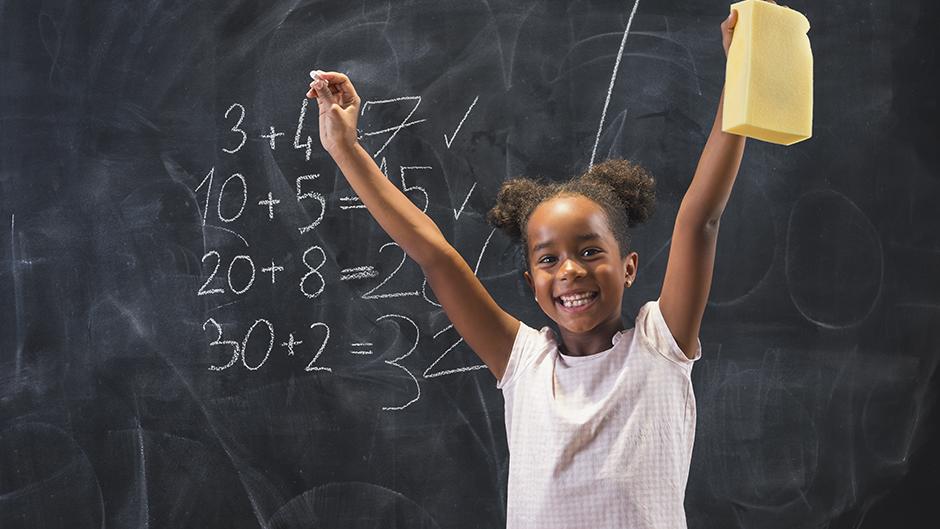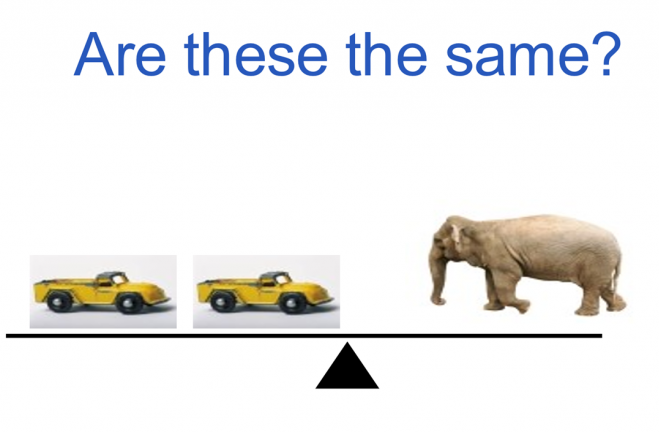K5 Math Success
Mathematics Success Starts in Elementary Schools
By Tim Shaughnessy and Diane James, SREB
 Elementary school is a time when students get excited about learning new things, and it’s also the best time to lay the foundations for future learning, especially in mathematics. But many young students have misconceptions about what math really is.
Elementary school is a time when students get excited about learning new things, and it’s also the best time to lay the foundations for future learning, especially in mathematics. But many young students have misconceptions about what math really is.
Students often think of math as numbers, calculations and operations; they see it as difficult and with little application to the real world. Many feel they need to rely on rote memorization to solve problems. But “all those things they say math is are just computations,” says Jason Adair, SREB’s program director for literacy and mathematics.
Math is about “complex problem solving, critical thinking, cognitive flexibility… those are the things we want our students to have; not just the ability to memorize formulas, numbers and algorithms,” notes Adair. To acquire these skills, students need to begin developing number sense in the elementary grades.
Components of Number Sense
Number sense is a student’s ability to understand, relate and connect numbers. It involves several skills that are key to mastering math, becoming college and career ready, and securing careers as the scientists, inventors or mathematicians of the future.
Adair and Sarah Inman, a former SREB instructional coach, outline five components of number sense that form the foundation of the elementary grades: Quantity and magnitude, numeration, equality, base 10 and the form of a number.
- Quantity and magnitude is not only about rote counting, but also about assigning a number to a set of items, such as 1 puppy, 2 puppies, 3 puppies. Students can also learn to think in terms of units, for example, 3 ducks + 2 ducks = 5 ducks.
- Numeration means students learn to identify cardinal numbers (1, 2, 3), ordinal numbers (first, second, third), skip counting (2, 4, 6) and subitizing numbers, or the ability to instantly recognize the number of objects without counting them.
 Equality means that two items are equal in value, not that the two items are the same. For example, two trucks may be equal in weight to an elephant, but an elephant is not the same as a truck. Too often, many elementary and middle grades students “see equal signs as the ‘answer comes next,’ and they don’t understand equality,” notes Adair.
Equality means that two items are equal in value, not that the two items are the same. For example, two trucks may be equal in weight to an elephant, but an elephant is not the same as a truck. Too often, many elementary and middle grades students “see equal signs as the ‘answer comes next,’ and they don’t understand equality,” notes Adair.
- Base 10 is a way of assigning a place value to numbers. It describes how much numerical value each digit has within a whole number. For example, in the number 3,563, the first 3 has a place value of 3,000, 5 has a value of 500, 6 has a value of 60 and the last 3 has a place value of 3. Students need to think in powers of 10, says Inman.
- The form of a number can be defined as multiple representations of quantity, ratios and mathematical information. This could be a fraction form, a decimal form, an expanded form or a slope intercept form. One $100 bill is a form. Forms that are equal to the $100 bill are 10 $10 bills or 100 $1 bills. They are different in form, but equal in value.
Transforming Students From Answer Getters to Thinkers
To be successful in school, students need to do so much more than memorize facts. “We’re really seeking creativity and communication to happen in the math classroom,” insists Inman. When students have number sense, teachers see an “overall improvement in students’ confidence and their ability to do mathematics, instead of just being afraid of not being able to hammer out an answer really quickly,” she says. Adair emphasizes, “we want to transform kids from answer getters to thinkers.”
Student success with number sense often hinges on their math teacher’s understanding and implementation of good questions, problem-solving techniques and flexibility. They may need professional development support to learn how to develop number sense in students.
Contact: Jason Adair, Jason.adair@sreb.org
This article was featured in the February 2022 issue of SREB School Improvement’s Promising Practices Newsletter.

